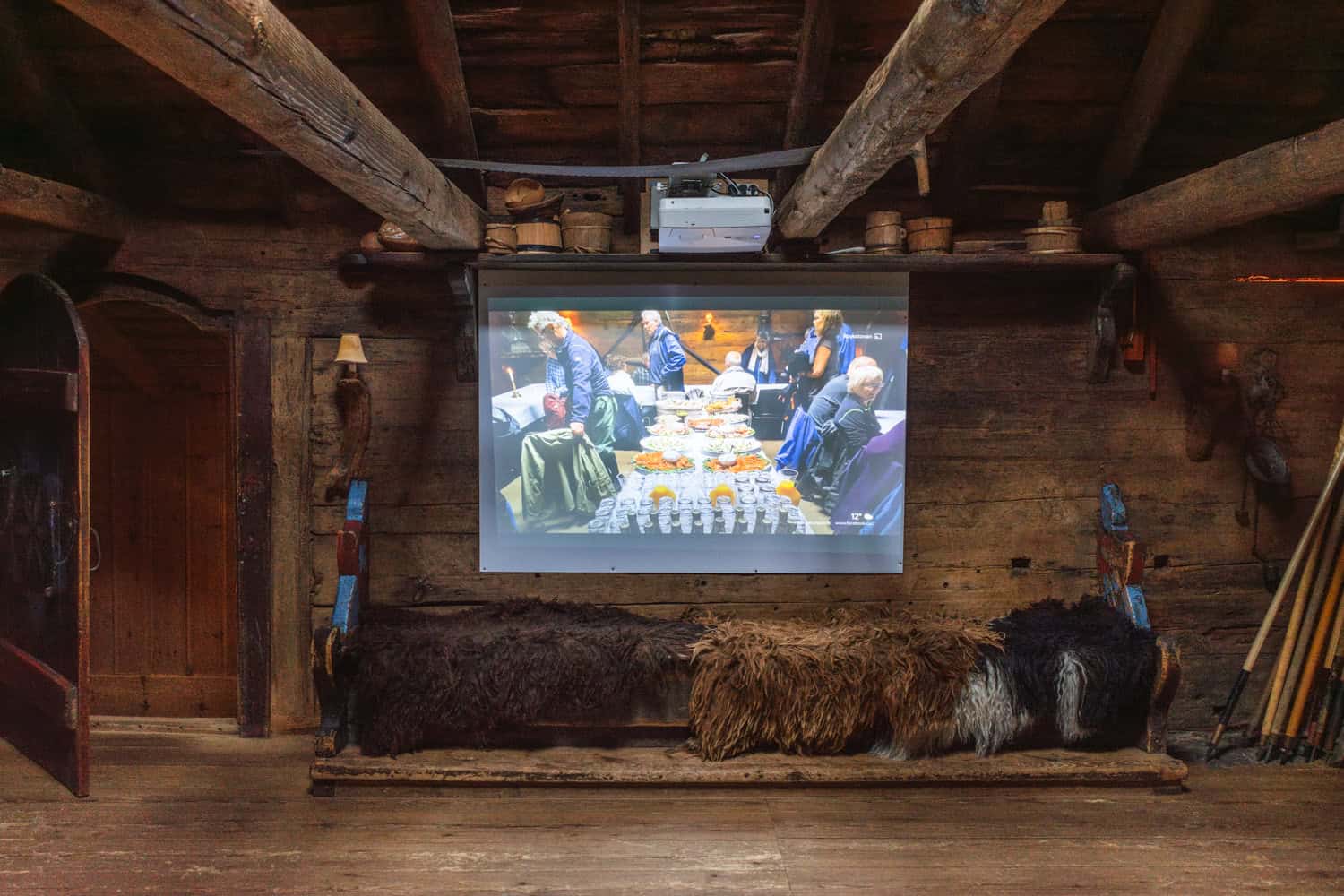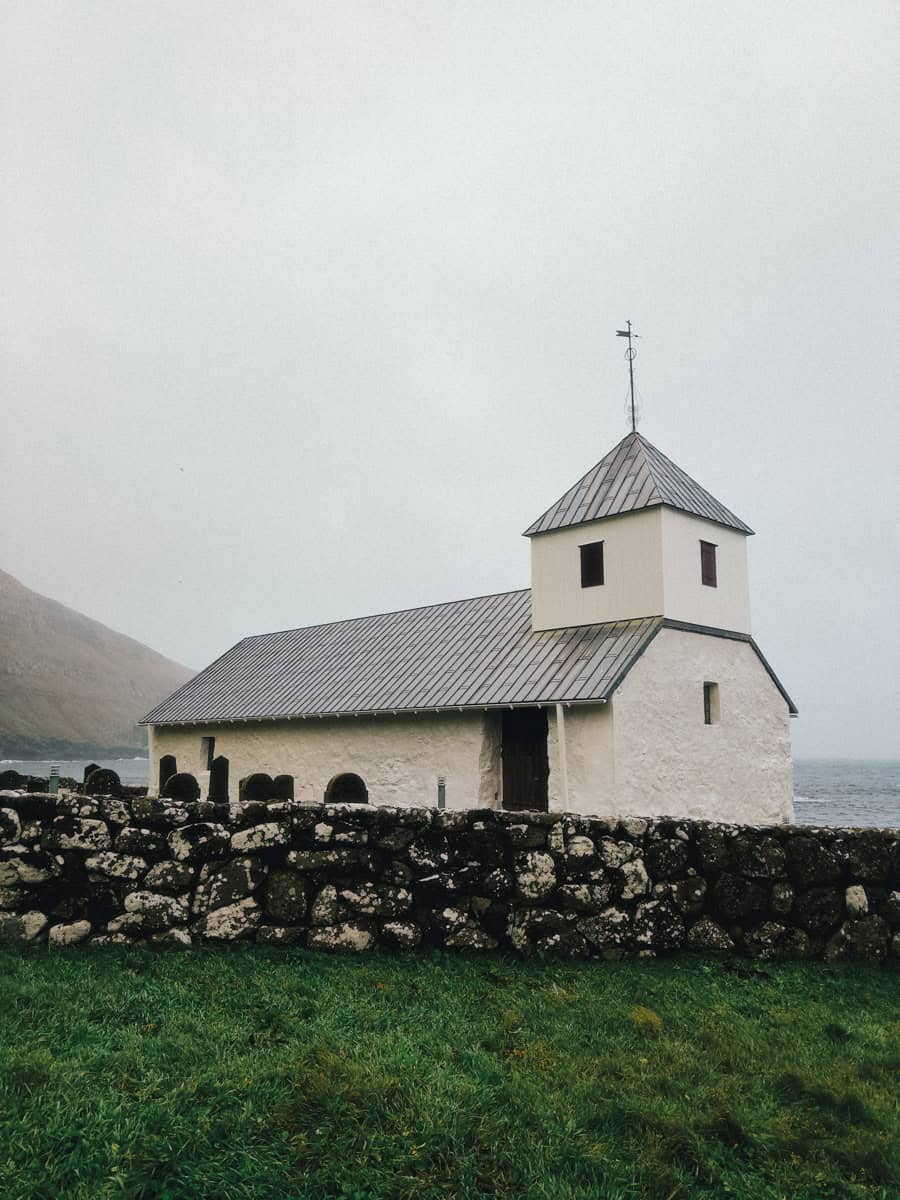
I visited Kirkjubøur on my last trip to the Faroe Islands in October, and to be honest, it wasn’t really on my radar. With so many epic landscapes to see in the Faroes, I wasn’t sure if this tiny village would be worth checking out.
Then a stormy day hit, and instead of staying cooped up in my Airbnb, I decided to explore a few villages near Tórshavn, where I was staying. I didn’t look up much about Kikijbour beforehand, so I went in with zero expectations—but it turned out to be such a cool surprise.
Just a quick 15-minute drive from Tórshavn, Kikijbour is actually one of the oldest and most historic villages in the Faroes. It’s even home to one of the world’s oldest inhabited wooden houses!
I had no idea how much history this little spot was hiding—it totally made the detour worth it.
You might also be interested in: 11 Best Things to do in the Faroe Islands
Things to Do in Kirkjubøur
Kirkjubøargarður
Known as the oldest continuously inhabited wooden house in the world, Kirkjubøargarður is a living piece of history. The Patursson family has lived here for 17 generations, and the house is part farmhouse, part museum. You can tour the home, where you’ll see relics from centuries past, including furniture and artifacts that provide a glimpse into life in medieval times. The owners are often available to share stories and history with visitors.
Visiting Kirkjubøargarður, also known as Roykstovan, was a definite highlight to my trip to Kirkjubøur. The home dates all the way back to the 11th century and is considered one of the oldest inhabited wooden houses in the world—possibly the very oldest.
Even more impressive, the house has been owned by the same family since the 1550s, adding a personal connection to its rich legacy.
You can tour the home for just a small fee 50 DKK, paid via an honesty box using cash or card. When I arrived, I had the place entirely to myself.

The house is easy to miss—it feels more like you’re walking into someone’s private home than a historic site. There aren’t any signs or markers indicating it’s a museum, so if you don’t know what to look for, you might pass it by.
When I stepped inside, I was blown away by how impressive it was. I’ve toured tons of historic homes in the U.S. that often feel dark, cramped, and a little dreary, but this was completely different.
Dating back to the 11th century, the house has vaulted ceilings, two stories, and even three bedrooms! The layout was honestly pretty much the same as our homes today. It’s amazing to see what the Faroese people were able to build with such limited resources.
The front door feels like it weighs 1,000 lbs. It literally took all my strength to open it. If you have been to the Faroe Islands you know how windy it can get. Hurricane force winds hit the islands pretty frequently, especially in the winter.
One detail that really caught my attention was the front door. When I first approached it, I almost thought it was locked because it was so incredibly heavy! This design isn’t just for show—it’s a practical solution to the intense Faroese weather.
If you’ve visited the Faroe Islands, you’ll know how stormy, rainy, and windy it can be. To withstand the frequent strong winds, doors had to be built heavy and sturdy, or they would risk being blown right off their hinges. It’s a small but fascinating example of how the Faroese adapted their homes to the harsh environment.
Read also: Village of Tjørnuvík in the Faroe Islands (Black Sand Beach, Surfing and Hikes!)


home.





Tour St. Olovs church
There are tons of old wooden churches in the Faroe Islands. Just about every village has one. The difference is this one you can tour for free. This church is the oldest church in the Faroe Islands that is still in use.
Built around 1200, this small, simple stone church continues to serve as a place of worship today. Its age and historical significance make it a fascinating site to visit, and you can even attend a service if you time it right.




Magnus Cathedral Ruins
Right next to the church you will see the ruins of Magnus Cathedral. These ruins are of Kirkjubøur’s most iconic landmarks.
Built in the 1300s, this massive structure is the largest medieval building in the Faroe Islands and was intended to be the main cathedral for the diocese. Though unfinished, its stone walls still stand, and walking through the open-air ruins gives you a sense of the village’s rich ecclesiastical history.

See the Traditional Grass Roof Homes
You will find grass roof homes in just about every village in the Faroe Islands and Kirkjubøur is no exception. The Faroese traditionally used grass roofs to insulate the homes against harsh weather.
The Faroe Islands experience a cold and windy climate with frequent rain. Grass roofs provided excellent natural insulation, helping homes stay warm during the winter and cool during the summer. The thick layer of turf minimized heat loss and made living spaces more comfortable.
The grass roofs also provided protection aginst the strong winds that hit the Faroe Islands frequently.
Grass roofs are heavy, which helps them stay in place during strong winds, a common occurrence in the North Atlantic. Their weight added structural stability to homes, reducing the risk of damage from storms.
Over time, grass roofs became a symbol of Faroese culture and tradition. They remain a proud and recognizable feature of the islands’ architectural heritage, even as modern building methods are adopted.
Today, while modern materials are often used, grass-roofed homes remain iconic and are sometimes maintained for their historical and aesthetic value.

Explore the Surrounding Scenery
Kirkjubøur is not just about history—it’s also a beautiful spot to take in the Faroese landscape. The village sits on the edge of the ocean, offering stunning views of the nearby islands, especially Hestur and Koltur.
Take a walk along the coastline for a peaceful and scenic experience. You can even hike from Tórshavn to Kirkjubøur via a coastal path if you’re up for a longer trek (around 7 km).

Tips for Visiting:
Driving there – The drive is very easy and short if you are coming from Torshvan. But beware, the roads heading into this village are single lane. If you see a car coming in the distance make sure to pull over into one of the pullover spots and let the car pass. The roads are in great condition so navigating here, even in bad weather is pretty easy.
Related: 16 Of my Best Tips on Driving in the Faroe Islands

Parking and bathrooms – There is free parking right by the church and free public restrooms right across the street from the parking lot. It’s a small village so you should have no problem finding the parking lot or restrooms.


How much time do you need here? Kirkjubøur can be visited in a few hours, so it’s perfect for a half-day trip. You really don’t need a tone of time here as the village is quite small.
Weather: As with anywhere in the Faroe Islands, the weather can be unpredictable. Dress in layers and bring a waterproof jacket, as rain showers are common.
Respect the History: Kirkjubøargarður is a private home as well as a historical site, so be respectful when visiting and follow any guidelines set by the owners.
Is Visiting Kirkjubøur Worth It?
Honestly, it depends on what you’re looking for. If you’re interested in history and want to see a traditional Faroese home, I’d highly recommend it.
The village is home to one of the oldest wooden houses in the world, and walking through the ancient church ruins and farmhouse was definitely a highlight for me. It’s an amazing glimpse into Faroese heritage.
That said, if historical sites aren’t your thing, Kirkjubøur might not feel particularly “special” visually. There are other villages, like Funningur and Gjógv, that offer similar traditional homes but in more dramatic, breathtaking landscapes.
For me, the historical significance of Kirkjubøur made it a worthwhile visit, partly because I was in the Faroe Islands for 3 weeks and had plenty of time to see everything on my list. If you’re into Faroese history, I think you’ll love it too. Plus, it’s super close to Tórshavn, so it’s an easy and quick trip—perfect for a rainy day when outdoor adventures aren’t an option.